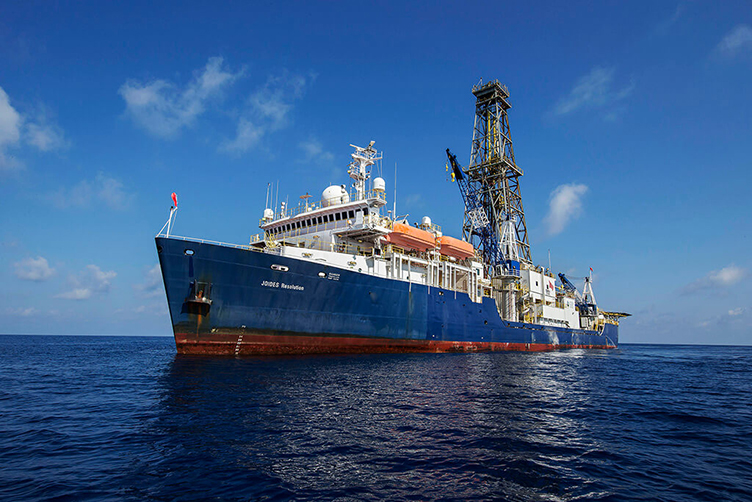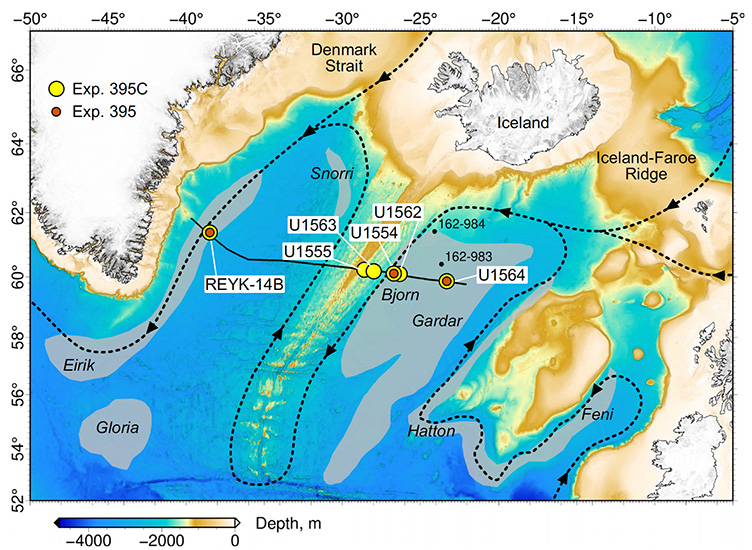Sailing into the past
On Monday June 12, in Ponta Delgada (Azores, Portugal), more than 30 scientists from around the world boarded the research vessel Joides Resolution to sail the North Atlantic Ocean for two months. The aim is to join forces as part of Expedition 395 of the International Ocean Discovery Program (IODP): “Reykjanes Mantle Convection and Climate”.

The International Ocean Discovery Program (IODP) is a collaborative international research program that coordinates maritime drilling, coring and monitoring expeditions to the seafloor, to study the Earth’s history recorded in the sediments and rocks there.
Matthias Sinnesael is part of this expedition. He is a geologist currently working as a postdoctoral researcher on the European Research Council (ERC) funded AstroGeo project, in Jacques Laskar’s team at IMCCE.
Matthias Sinnesael is a specialist in the detection of astronomical cycles in geological archives. Expedition 395 will carry out an east-west transect across the North Atlantic Ocean: among other things, this location is particularly important for studying past changes in ocean circulations and glacial-interglacial climate cycles in the Northern Hemisphere.
These changes are recorded in the sediment layers that have accumulated above the magmatic rocks. The data that Matthias Sinnesael will be able to collect and analyze will then be used to construct high-resolution time scales by linking geological observations to astronomical solutions.

Understanding the glacial cycles that have occurred over the last few million years is closely linked to the development of the astronomical forcing theory of climate. This theory puts forward the idea that changes in the Earth’s climate (ice age cycles) are caused by changes in the tilt of the planet’s rotational axis and the shape of the Earth’s orbit.
IMCCE’s ASD team, under the direction of Jacques Laskar, has been studying these past astronomical cycles and the insolation curves linked to the Earth-Sun configuration for decades, and making them available to the scientific community.
Our team’s participation in this exceptional mission is recognition of the importance of our past contributions, and illustrates the great advantages of interdisciplinary projects like AstroGeo, which bring together the fields of geology and astronomy.
Finally, this work will be fundamental to developing a robust chronology of all past climate changes, which Expedition 395 will have been able to observe!